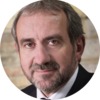"If we architects were allowed to do consistently what we dream of, the world would be a better place." Zaha Hadid, Architect
Despite digitalisation and medialisation, the starting point for the work of most cultural institutions in Europe is a physical place. Whether the respective site is a globally acclaimed building designed by a star architect, the cultural conversion of an existing site such as an industrial building, or a temporary performance in an urban space - localisation is part of the artistic production. What are the success criteria for new places of culture? How can cultural places trigger new social discourses? The track broadly summarises the concept of cultural property in order to focus on the emergence and development of cultural relevant places. It contrasts official planning with civil society initiatives, established institutions with new developments, tried and tested strategies with innovative simulation and analysis methods. The discussion of the different approaches shows the current trends in dealing with cultural places in the European cultural market.
November 8, 2019, 10:00 am – 3:15 pm, hall Erich Brost-Pavillon
|
10:00 - 10:05 Uhr
|
|
|
Opening address by Dr. Hagen W. Lippe-Weißenfeld and Jan Hinnerk Meyer, Meyer Architekten GmbH und Projektschmiede GmbH
|
|
10:05 - 10:45 Uhr
Impuls
|

© S. Günther
|
|
Kulturelle Orte: den Erfolg planen
Cultural Places: planning for success
Dr. Pablo v. Frankenberg,
Freelancing curator
|
|
10:45 - 11:00 Uhr
|
|
|
Coffee break & networking
|
| 11:00 - 11:30 Uhr |

© Caroline Seidel
|
|
Kunst ohne Haus
Art without a house
Britta Peters,
Urban Arts Ruhr, Artistic Director
|
| 11:30 - 12:00 Uhr |

© Axel Schmidt
|
|
Stadtraum = Kultureller Ort: das Flussbad Berlin
Urban Space = cultural places: Flussbad Berlin
Tim Edler,
Board realities:united
|
|
|
12:00 - 13:00 Uhr
|
|
|
Lunch beak
|
| 13:00 - 13:30 Uhr |

|
|
Collaborations: Program and Architecture Development of the Danish Architecture Centre (engl.)
Peter Fangel Poulsen,
Managing Partner BAUHERR
BLOX, das Dänische Architekturzentrum von Rem Koolhaas ist ein Ort, an dem Architektur, Programm und Umfeld eine organische Verbindung eingehen. Statt dem Architekturteam ein Programm vorzugeben, hat es DAC und OMA in einem kollaborativen Prozess entwickelt.
|
| 13:30 - 14:00 Uhr |

© Herlinde Koelbl
|
|
Der Vielfalt Einheit verleihen: die James Simon Galerie
Giving unity to diversity: the James Simon Gallery
Prof. Dr. Hermann Parzinger,
President Prussian Cultural Heritage Foundation
|
|
14:00 - 14:15 Uhr
|
|
|
Coffee break & networking
|
| 14:15 - 15:15 Uhr |
|
|
Diskussion "Utopien/Heterotopien" mit allen Referent*innen
Panel discussion Utopias/heterotopias with all speakers
Orte prägen kulturelle und künstlerische Produktion wesentlich. Wie sieht diese
Wechselwirkung aus? Wie kann sie kuratiert werden? Was sind die zukünftigen
Herausforderungen, denen kulturelle Orte begegnen?
|
|
15:15 - 15:15 Uhr
|
|
|
Coffee break & networking
|
| 15:30 - 17:00 Uhr |
|
|
FINAL DEBATE in hall 12
"Transform the European Cultural Market"
|
Subject to change without notice.
The discussion will be translated simultaneously. A change in tracks is possible during the breaks.
Back to overview
Download Congress program
Download program overview